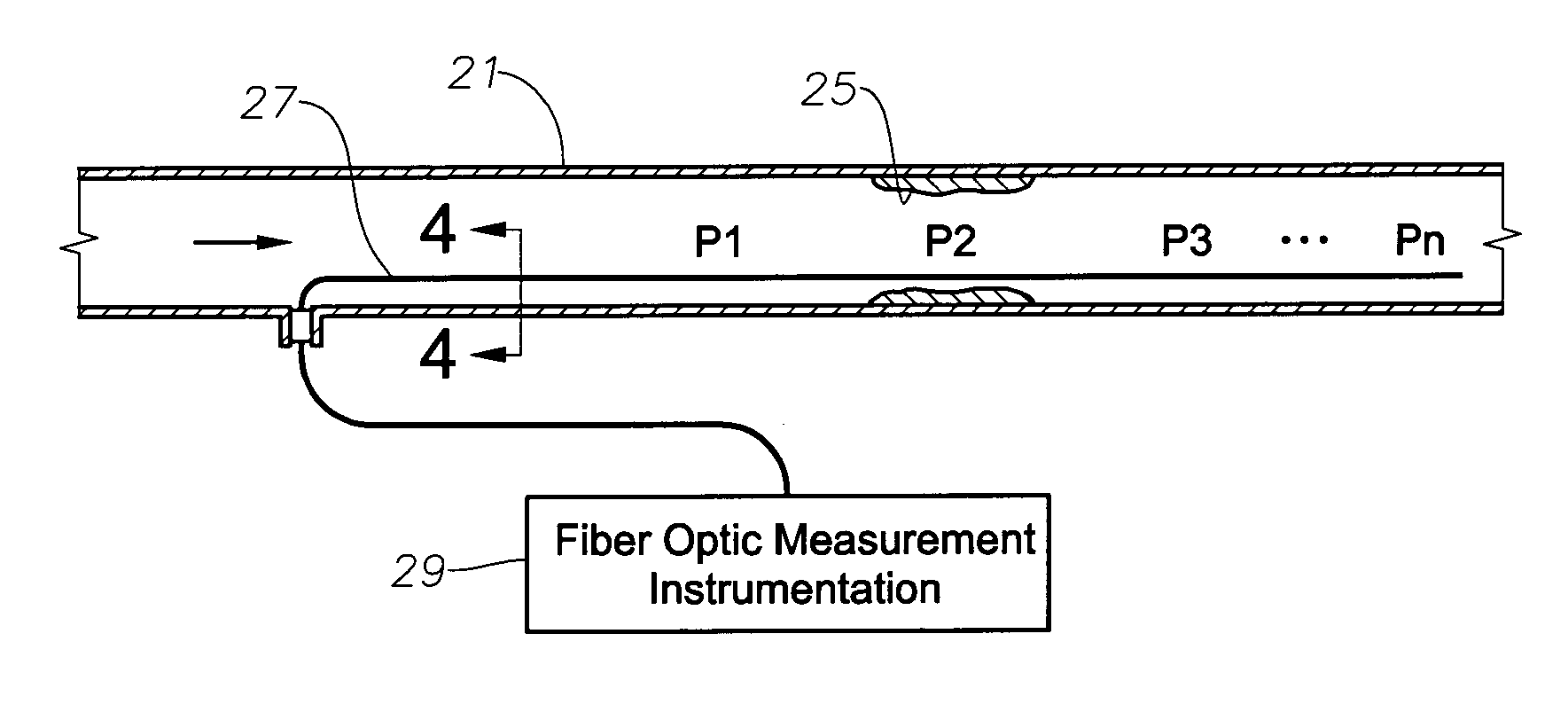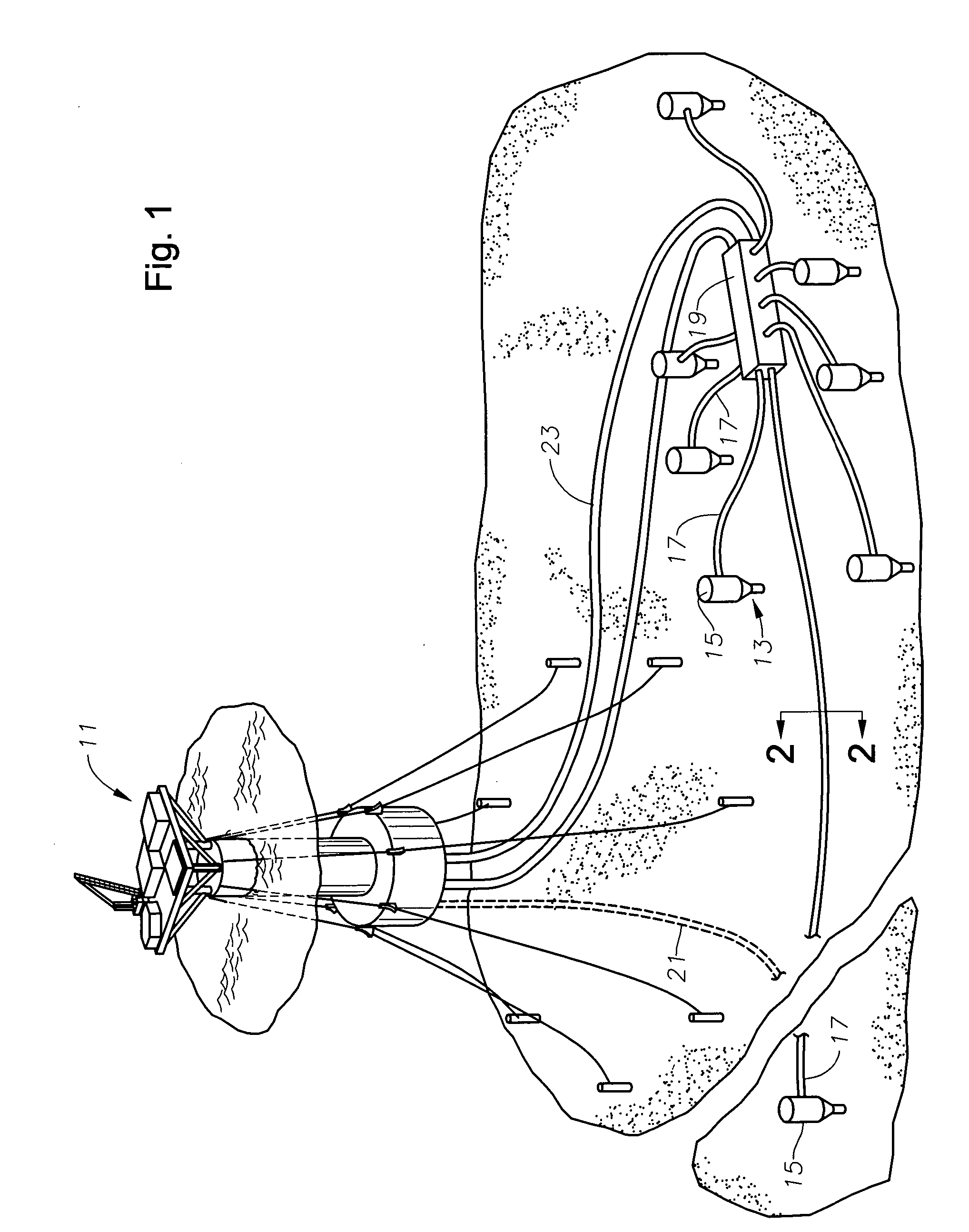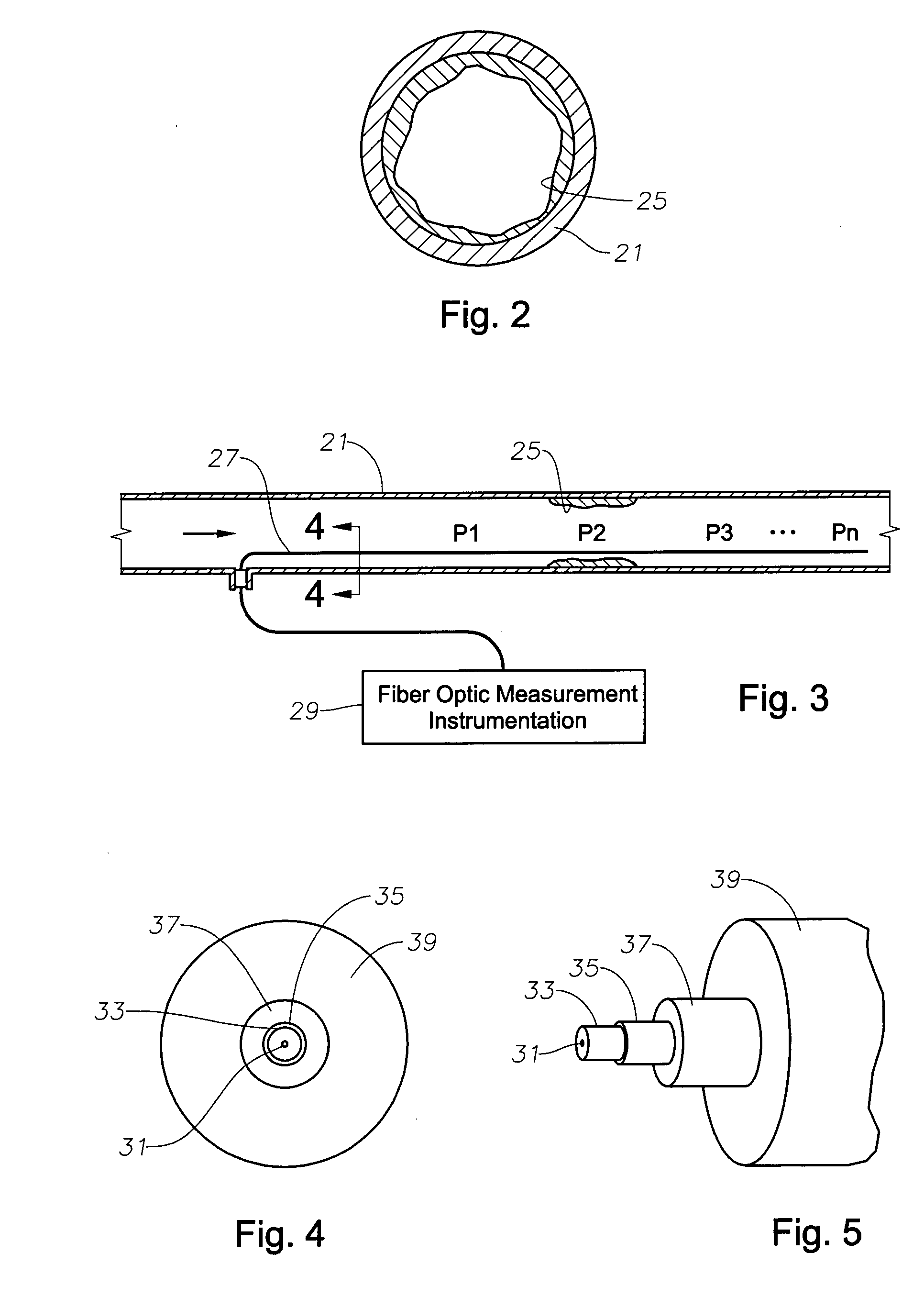Fiber optic sensor and sensing system for hydrocarbon flow
a technology of hydrostatic pressure and fiber optic cables, which is applied in the direction of instruments, surveyors, and well accessories, can solve the problems of internal pipe erosion and corrosion, serious problem of liquid hydrocarbon transport, wax and scale buildup in the pipe walls, etc., and achieve the effect of enhancing the responsiveness of fiber optic cables and magnifying the mechanical strain associated
- Summary
- Abstract
- Description
- Claims
- Application Information
AI Technical Summary
Benefits of technology
Problems solved by technology
Method used
Image
Examples
Embodiment Construction
[0025] Referring to FIG. 1, a vessel 11 collects well fluids from subsea wells 13 situated in a cluster on a sea floor 12. Preferably, each subsea well 13 includes a subsea wellhead 15 protruding above the sea floor 12. A production line 17 extends from each wellhead 15 to a collection manifold 19 situated on the subsea floor 12. A riser 23 extends from the collection manifold 19 to the vessel 11 for transferring well fluids from the subsea floor 12 to the vessel 11. As will be readily appreciated by those skilled in the art, the riser 23 can preferably include a plurality of individual risers 23 or a bundle of individual tubular structures for supplying segregated streams of well fluid from the collection manifold 19 to the vessel 11. In some situations, it is desirous to connect production line 17 to vessel 11 via a riser 21 rather than to collection manifold 19 and through common riser 23. While vessel 11 is shown as a floating platform in FIG. 1, vessel 11 is merely representati...
PUM
 Login to View More
Login to View More Abstract
Description
Claims
Application Information
 Login to View More
Login to View More - R&D
- Intellectual Property
- Life Sciences
- Materials
- Tech Scout
- Unparalleled Data Quality
- Higher Quality Content
- 60% Fewer Hallucinations
Browse by: Latest US Patents, China's latest patents, Technical Efficacy Thesaurus, Application Domain, Technology Topic, Popular Technical Reports.
© 2025 PatSnap. All rights reserved.Legal|Privacy policy|Modern Slavery Act Transparency Statement|Sitemap|About US| Contact US: help@patsnap.com



